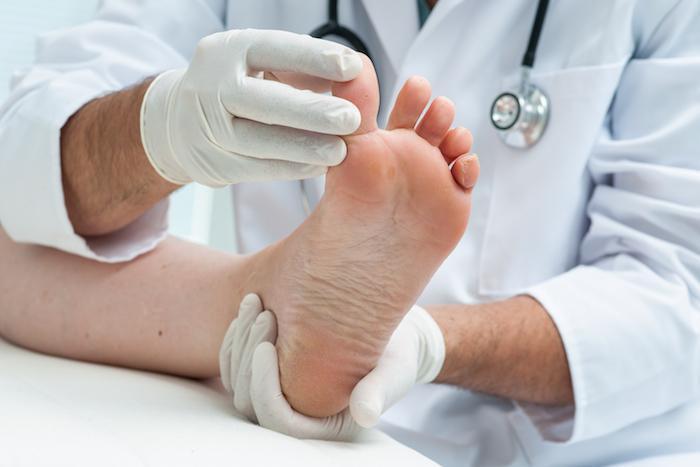Gout is a condition in which high levels of uric acid lead to the formation of urate crystals, and these crystals then get inside joints and cause pain and inflammation. While gout can affect any joint in the body, it most often affects the big toe.
Gout tends to come and go, and during a flare-up, you may find it extremely painful to walk. Fortunately, there are options that can help you treat and prevent this condition. In this blog, the providers at Great Lakes Foot and Ankle Institute explain four effective treatments for gout.
What causes gout?
Your body produces uric acid when it breaks down purines, which are substances that are found naturally in your body and in food. Your body normally breaks down uric acid, but if you have too much, or if your kidneys don’t filter it properly, it can build up in your blood.
If it builds up in your blood too much, urate crystals can form and accumulate in your joints, which can lead to inflammation and pain. One way to have high levels of uric acid is to consume a high-purine diet.
Foods that can be high in purines include red meat, seafood, organ meats, sugar-sweetened beverages, and alcohol. Consuming too much of these foods and beverages can produce more uric acid than your body can break down.
Symptoms of gout can include the following:
- Intense joint pain
- Redness
- Limited range of motion
- Inflammation and swelling
Treatments for gout can make the flare-ups more manageable or occur less often.
Targeting gout
Here are four ways you can help treat and prevent gout attacks:
1. Lifestyle changes
Lifestyle changes can be very effective in preventing gout attacks. One way to help prevent attacks is to change your diet by doing the following:
- Limiting your intake of high-purine items, such seafood, organ meats, and alcohol
- Limiting your intake of sugar
- Drinking more water
- Increasing your intake of fruits, vegetables, legumes, and whole grains
You should also lose weight if you’re overweight. Having excess weight can increase your chances of experiencing a gout attack. If you’re not sure where to start when it comes to making dietary changes, we can help you.
2. Non-steroidal anti-inflammatory drugs
Non-steroidal anti-inflammatory drugs, or NSAIDs, are available by prescription or over the counter, and they can help reduce swelling and pain of gout attacks. Over-the-counter NSAIDs include drugs such as Advil® and Motrin® (ibuprofen) and Aleve® (naproxen sodium.)
3. Prescription medications
Prescription medications can target gout in a number of ways. For example, some medications can decrease the amount of uric acid in your blood, others can help break down the uric acid, and others can reduce the inflammation specifically associated with gout.
One of the most commonly prescribed medications for gout is called colchicine. It prevents uric acid from forming urate crystals. However, it’s most effective when taken in the early stages of a gout attack.
4. Corticosteroids
Corticosteroids are a type of medication that quickly decreases swelling and inflammation. They can be taken orally or intravenously. They’re generally only prescribed for people who can’t take NSAIDs or colchicine, as corticosteroids can increase the risk of developing certain conditions, such as diabetes, high blood pressure, and infection.
If you have gout — or think you might— we can give you a thorough evaluation and discuss your next steps. To learn more, book an appointment over the phone with Great Lakes Foot and Ankle Institute today.







